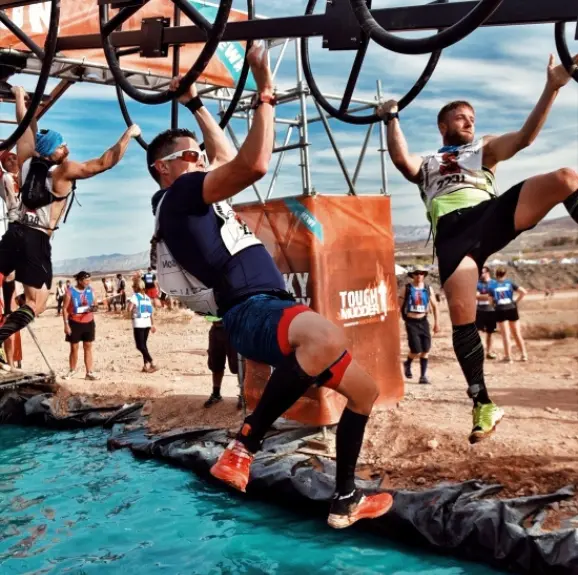 May 22, 2025
May 22, 2025
Why strength training is essential for overall fitness and adventure prep
Strength training is your body’s insurance policy and key to adventure fitness.
READ MOREHaving trained for a number of different obstacle racing events - Spartan included - I speak from experience when I say most people only do half the training they need to. Say what?!
So, what does a good obstacle course racing training programme look like?
It’s official – Spartan is back in Auckland for another year, and this time they’re bringing both the 5km Sprint and the 10km Super!
Spartan is probably the world’s best – if not, the most well-known – obstacle course race. It’s one of the very few chances us Kiwis get to train and compete in an obstacle course race - without having to travel to Australia. Spartan also never releases a full list of the obstacles involved, so the surprise element is a true test of how well you’ve prepared and trained.
Having trained for a number of different obstacle racing events - Spartan included - I speak from experience when I say most people only do half the training they need to. Say what?!
Most obstacle training programmes only concentrate on the fitness aspect of an OCR race. Being fit and strong enough to do the obstacles, and complete the race, is super important, yes, but what people often forget to do is learn and practice the skill involved with the different obstacles. And if this isn’t your first rodeo, you’ll know that with Spartan, an incomplete or failed obstacle equals 30 burpees.
Take the spear throw for example – one of Spartan’s trademark obstacles and a staple in most of their races. A spear throw, in theory, sounds easy – right? You pick up a spear, throw it at the hay bale, and pray that it sticks so you’re not penalised with burpees.
Ironically though, the spear throw has one of the highest failure rates out of all of Spartan’s obstacles – in fact, 86% of people end up doing those dreaded burpees. 30 burpees might not seem like a huge amount but imagine if you failed 10 obstacles. That’s a total amount of 300 burpees – on top of the distance you must run, and the other obstacles you must complete.
So, what does a good obstacle course racing training programme look like?

Any obstacle course race requires good upper body strength, grip strength and endurance.
I’ve mentioned in a previous blog post about making the shift from trail running to obstacle course racing that grip strength is required so you can hold on to things like a rope or even your own body weight.
Then training push and pull upper body movements is essential otherwise you’ll tire extremely quickly on the obstacles.
Lastly, you need to be able to set a good pace and have the right endurance to make it through the whole race.
Your training needs to focus on functional movements that will help you get up, down and around obstacles, and the workouts need to be structured so they help you progress your strength and endurance – in other words you can progressive run for longer and lift heavier weights.
This is where most OCR training programmes fall short – and its purely because they don’t have the space or the necessary equipment. You need to learn the skill involved with an obstacle – and be able to practice it before race day.
Let’s take the spear throw again as an example. In order to get the spear to stick in your target, you need accurate throwing skills and body coordination. You can work on developing your core strength and practice throwing a ball at a target but knowing how to throw a spear and being able to throw a spear are two different things.
The same goes for other obstacles like a rope climb. You need grip strength and upper body strength to pull yourself up a rope, but unless you’ve practised pulling your own body weight up off the ground, you might be a little surprised come race day how much technique is involved.
To adequately train and prepare for an obstacle course race like Spartan, you not only need to train the right strength and fitness, you need to apply that physical training to specific obstacles, so you can develop the skills and coordination needed to successfully complete them.
Alongside a self-directed and personalised training plan with gym-based workouts, you’ll take advantage of:
See you out on the course – look out for the black Ascend Fit shirts!
 May 22, 2025
May 22, 2025
Strength training is your body’s insurance policy and key to adventure fitness.
READ MORE Apr 8, 2025
Apr 8, 2025
Why chasing peaks and exploring the unknown could be the spark your training needs.
READ MORE Mar 3, 2025
Mar 3, 2025
AJ is the definition of someone who thrives outside his comfort zone.
READ MORE